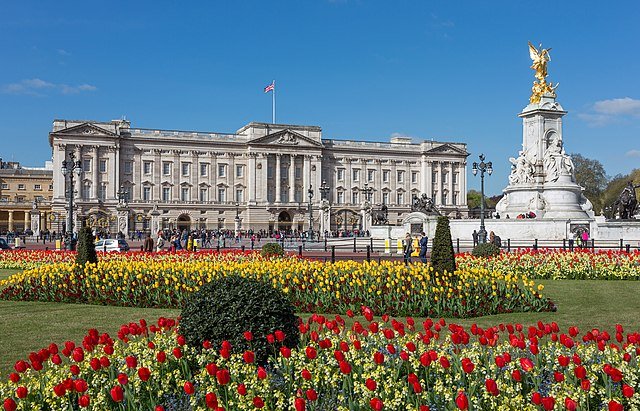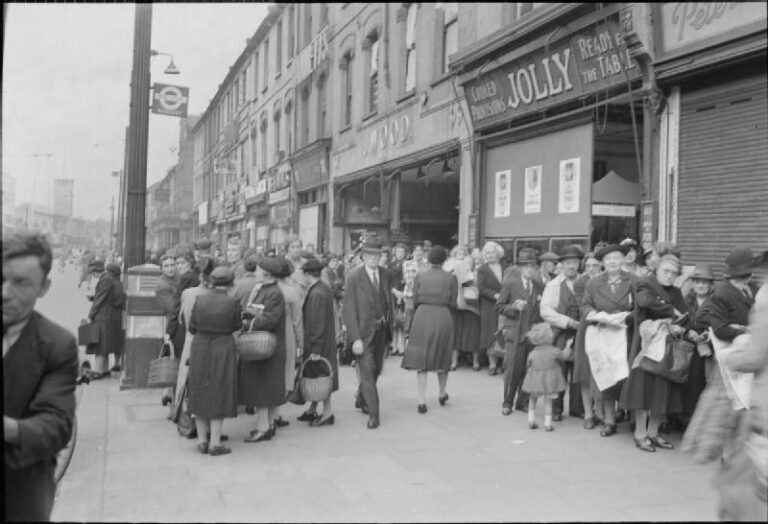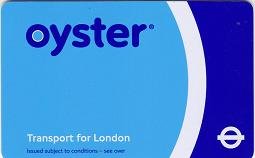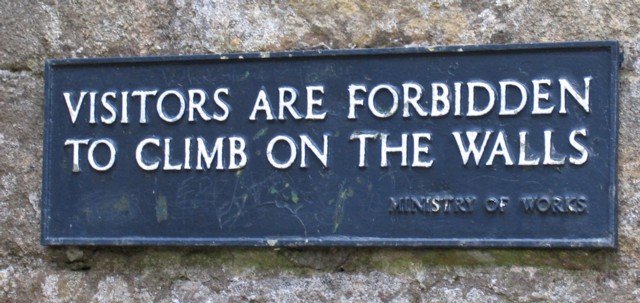Where to Drink for that Cockney Experience?
What You Need To Know:
Looking for an authentic Cockney experience in London? The city’s historic pub culture offers visitors a perfect way to soak in this distinctive East London tradition. For the most authentic Cockney experience, head to venues like Cahoots cocktail bar where you can join Sunday Cockney singalongs complete with piano accompaniment and song sheets.
London’s pub culture isn’t just about drinking—it’s about community and tradition. In Covent Garden, establishments like Mr Fogg’s Tavern offer traditional Victorian atmospheres where you can enjoy British food, beer, and sometimes even participate in Cockney sing-alongs. These venues provide more than just drinks; they offer a window into London’s rich social history.
A pub crawl through London’s historic venues can be the highlight of your visit, combining traditional Cockney songs with fascinating stories about the city’s past. Many organized tours will take you through the Theater District and Covent Garden area, where you’ll find some of the most characterful pubs that have maintained their old-world charm.
Key Takeaways:
- Cahoots cocktail bar offers authentic Cockney singalongs on Sundays with piano music and distributed song sheets.
- Covent Garden houses several traditional pubs including Mr Fogg’s Tavern where visitors can experience Victorian ambiance and British fare.
- Organized pub crawls provide an immersive way to experience Cockney culture while learning about London’s fascinating social history.
Where to Drink for that Cockney Experience?
Historical Significance of Cockney Culture:
The Cockney identity has played a pivotal role in shaping London’s cultural landscape through its distinctive dialect, traditions, and community spirit. Its influence extends beyond just an accent to encompass a rich heritage that continues to fascinate visitors to London.
Origins and Evolution of the Cockney Identity:
The term “Cockney” traditionally refers to someone born within earshot of the Bow Bells of St. Mary-le-Bow Church in London’s East End. This geographic distinction dates back centuries and created a unique community identity.
Working-class residents of the East End of London became known for their distinctive accent and tight-knit community values. During the Industrial Revolution, Cockney culture flourished as East London grew into a center for trade and manufacturing.
Markets like Spitalfields became essential gathering places where Cockney traders (costermongers) sold their wares. These markets remain important cultural landmarks today.
The Cockney identity survived despite challenges including the Blitz during World War II, which heavily damaged East London but strengthened community bonds.
Cockney Slang and Its Impact on Language:
Cockney rhyming slang represents one of the most creative linguistic innovations in British English. This coded language developed in the 1800s, possibly as a way for market traders to speak without customers understanding.
The slang works by replacing a common word with a phrase that rhymes with it, then often dropping the rhyming part. For example, “stairs” becomes “apples and pears” then simply “apples.”
Popular Cockney phrases that entered mainstream English include:
- “Adam and Eve” (believe)
- “Trouble and Strife” (wife)
- “Ruby Murray” (curry), sometimes shortened to Ruby
- “Syrup and Fig” (wig), sometimes shortened to Syrup
This distinctive language style appears throughout British media and entertainment. It has influenced modern London slang and even global pop culture.
Cockney’s distinctive language patterns continue to evolve while maintaining their cultural significance, creating a living linguistic heritage visitors can experience in London’s traditional pubs.
Iconic Cockney-Inspired Pubs in Central London:
Central London boasts historic pubs where visitors can experience authentic cockney culture through traditional food, drink, and atmosphere. These establishments have maintained their character for centuries while serving locals and tourists alike.
Where to Drink for that Cockney Experience?
The Prospect of Whitby:
Dating back to 1520, The Prospect of Whitby claims to be London’s oldest riverside pub. Located in Wapping, this historic establishment was once frequented by sailors, smugglers, and locals speaking genuine cockney rhyming slang.
The pub features original stone floors and a pewter-topped bar that has survived centuries of use. Look for the noose hanging outside – a reminder of the pub’s connection to notorious criminals who were executed nearby at Execution Dock.
The Thames views from the back terrace are spectacular. Visitors can enjoy traditional British fare while imagining the cockney dockers and merchants who once gathered here after long days at the nearby markets.
Famous patrons throughout history include Charles Dickens and Samuel Pepys, both known for documenting cockney life in London.
Ye Olde Cheshire Cheese:
Rebuilt after the Great Fire of London in 1666, Ye Olde Cock Tavern on Fleet Street offers an authentic cockney pub experience. This narrow establishment boasts low ceilings, wooden paneling, and a warren of small rooms spread across multiple floors.
The pub’s dimly lit interior creates a cozy atmosphere perfect for enjoying a pint of traditional ale. Its cramped quarters reflect the authentic experience of old London drinking establishments where cockney workers would gather.
Literary giants like Charles Dickens and Dr. Samuel Johnson were regulars here. The pub appears in several novels that capture cockney London life.
Traditional fare includes steak and kidney pudding, fish and chips, and other classic cockney dishes that have remained largely unchanged for generations.
The Blind Beggar:
The Blind Beggar in Whitechapel gained notoriety as the site where gangster Ronnie Kray murdered George Cornell in 1966. This East End pub represents the grittier side of cockney history and London’s infamous gangland past.
Named after a local legend, the pub’s interior displays photographs and memorabilia documenting its connection to the Kray twins, East London’s most famous cockney criminals.
Despite its infamous history, today’s Blind Beggar offers a welcoming atmosphere. The pub serves traditional East End fare alongside modern options.
The Blind Beggar also holds significance as the location where William Booth, founder of the Salvation Army, began his East London ministry, highlighting the pub’s connection to multiple aspects of cockney social history.
Cockney Pub Experience:
London’s traditional pubs offer visitors an authentic glimpse into cockney culture, language, and entertainment. These local establishments blend history with living traditions that continue to thrive in the East End and beyond.
Traditional Pub Games and Entertainment:
Authentic cockney pubs feature classic games that have entertained Londoners for generations. Darts remains a pub staple, with boards prominently displayed and local leagues often competing in evening matches.
Dominoes clacking on wooden tables creates a distinctive soundtrack in many traditional establishments. Players hunched over their tiles, deep in concentration, represent a timeless London scene.
Shove ha’penny, though less common today, can still be found in pubs preserving cockney heritage. This sliding coin game requires precision and has entertained patrons for centuries.
Many pubs host regular quiz nights that blend modern questions with East London history and culture. These events typically happen midweek and welcome visitors to join local teams.
Some historic pubs in Covent Garden area offer organized pub crawl experiences that combine drinking with learning about London’s rich history.
Cockney Rhyming Slang in Conversation:
Cockney rhyming slang originated in London’s East End as a coded language. Today, certain phrases have entered mainstream English while others remain local treasures.
Common examples you might hear include “apples and pears” (stairs), “dog and bone” (phone), and “bottle and glass” (class). Listen carefully during pub conversations to catch these distinctive phrases.
Bartenders in traditional cockney pubs often use rhyming slang with regulars. Don’t be shy about asking for translations – most locals enjoy sharing this cultural tradition with visitors.
Some pubs display illustrated guides to common cockney phrases on their walls. These visual aids help newcomers understand the often confusing but always colorful language.
Engaging with this unique dialect adds depth to the London pub experience. Even attempting a few simple phrases can spark friendly conversations with locals.
Live Music and Performances:
The traditional cockney sing-along remains a beloved pub tradition. These events feature piano players accompanying patrons singing classic London tunes and music hall favorites.
Several historic pubs host regular sing-alongs, including the famous Coach & Horses, which offers piano-accompanied performances every Wednesday and Saturday evening.
Mr Fogg’s Tavern in Covent Garden delivers an immersive Victorian experience complete with period-appropriate entertainment in a traditional tavern setting.
East End pubs frequently showcase local musicians performing cockney classics. These performances typically occur on weekend evenings and rarely require advance tickets.
The beloved “knees-up” tradition involves energetic group dancing to upbeat cockney tunes. Expect clapping, singing, and possibly being pulled into the festivities by enthusiastic locals.
Must-Visit Spots in Covent Garden:
Covent Garden offers some of London’s most authentic pub experiences, where visitors can enjoy traditional drinks and soak up genuine local atmosphere. The area’s historic establishments have served patrons for centuries while maintaining their distinctive cockney character.
The Lamb & Flag:
Tucked away on Rose Street, The Lamb & Flag stands as one of Covent Garden’s oldest pubs, dating back to 1772. This historic tavern was once nicknamed “The Bucket of Blood” due to the bare-knuckle fights that took place here.
The pub retains much of its original character with dark wood paneling, uneven floors, and a cozy atmosphere that transports visitors back in time. Literary enthusiasts will appreciate that Charles Dickens was a regular patron.
The Lamb & Flag serves a fine selection of traditional ales and British pub fare. Its narrow passageways and small rooms create an intimate setting where visitors can experience an authentic slice of old London.
The Harp:
Just on the edge of Covent Garden, The Harp has earned its reputation as one of London’s finest craft beer hotspots. This narrow, Victorian-style pub features beautiful stained-glass windows and walls adorned with portraits and memorabilia.
The Harp has won numerous awards including CAMRA’s National Pub of the Year. Its constantly rotating selection of real ales and ciders draws both locals and tourists seeking quality drinks.
Despite its popularity, The Harp maintains a laid-back atmosphere where visitors can actually find a seat and engage in conversation. The front bar area gets lively, while upstairs offers a quieter experience for those seeking a more relaxed drink.
Where to Drink for that Cockney Experience?
Planning Your Cockney-Themed Pub Crawl:
A successful Cockney pub crawl requires timing, navigation, and knowing which historic establishments to visit. The right preparation ensures visitors can fully embrace the authentic East End drinking culture while enjoying traditional pubs.
Best Times to Visit:
The ideal time to embark on a Cockney pub crawl is weekday evenings, particularly Thursday or Friday from 6-10 PM. These times offer the perfect balance of lively atmosphere without weekend overcrowding.
Many traditional East End pubs host special events on specific days:
- Thursdays: Traditional music nights
- Fridays: Cockney sing-alongs
- Saturdays: Busiest nights (arrive early)
Seasonal considerations matter too. Summer allows for enjoying outdoor seating areas, while winter offers cozy interiors with roaring fires. Avoid major holidays when pubs might be closed or exceptionally crowded.
Some organized tours like the Pub Crawl & Sing-along Experience in Covent Garden run on set schedules. These guided experiences often include historical commentary and traditional Cockney songs.
Transportation and Routes:
Central London offers multiple transportation options for pub crawlers. The Underground (Tube) is most efficient, with the District and Hammersmith & City lines serving traditional East End areas.
Popular Cockney pub routes include:
- East End Classic: Start at Liverpool Street Station and work eastward
- Docklands Trail: Follow historic Thames-side pubs
- Covent Garden Circuit: Urban pubs with rich theatrical history
Walking between venues keeps the authentic experience intact. Most traditional routes have pubs spaced 5-10 minutes apart on foot. This spacing allows visitors to enjoy the neighborhood character between drinks.
For those preferring organized experiences, London Pub Crawl and Cockney Sing-Along tours handle the navigation details. These tours typically allow enough time to order food at different pubs, adding to the cultural experience.
Where to Drink for that Cockney Experience?
Frequently Asked Questions:
London offers numerous drinking establishments where visitors can immerse themselves in authentic cockney culture. These range from historic East End pubs to venues with singalongs and themed experiences that showcase London’s working-class heritage.
What are some historic pubs in London for an authentic cockney experience?
For a genuine cockney experience, visitors should head to the East End of London where traditional pubs maintain the area’s rich heritage. The Prospect of Whitby in Wapping dates back to 1520 and offers riverside views along with centuries of maritime history.
The Ten Bells in Spitalfields has strong connections to East End history and provides an authentic atmosphere with traditional decor. This pub has remained largely unchanged for generations, offering visitors a glimpse into historic London.
The Spaniards Inn in Hampstead comes highly recommended as an iconic London pub experience. Its age and literary connections make it a cultural landmark beyond just being a place to drink.
Can you recommend any iconic East London pubs that offer a true local vibe?
The Rose and Crown stands out as a recommended neighborhood pub that provides an authentic local experience. This establishment maintains the traditional feel that many visitors seek when exploring London’s pub culture.
The Palm Tree in Mile End preserves a distinctly East End atmosphere with its vintage decor and occasional live music. The pub’s unchanged interior transports visitors to London’s past while providing an authentic local experience.
The Carpenters Arms in Bethnal Green offers a genuine slice of East London life away from the tourist trail. Local patrons, traditional ales, and classic pub food create an environment where visitors can experience everyday cockney culture.
Where can visitors find traditional cockney pubs that may offer free walking tours?
Several pubs in the East End participate in local tourism initiatives that include free walking tours exploring the area’s history. The Pride of Spitalfields often serves as a starting point for walking tours through the historic streets of Whitechapel and Spitalfields.
The Blind Beggar in Whitechapel, famous for its gangland connections, sometimes collaborates with local guides offering free tours. These tours typically cover the pub’s notorious history and the surrounding area’s cultural significance.
The George Inn near London Bridge occasionally hosts free historic walks that highlight the pub’s centuries-old heritage. Tour participants learn about London’s drinking history while enjoying the authentic atmosphere of this National Trust property.
What are the best options for a guided pub tour in London that explores the city’s cockney heritage?
Guided tours of London’s iconic pubs offer a comprehensive introduction to cockney culture with professional insights. These tours often include visits to multiple historic establishments, each offering a different perspective on East End traditions.
East End Pub Tours provide expertly guided experiences through the historic drinking establishments of Whitechapel and Shoreditch. Participants learn about local history, brewing traditions, and cockney rhyming slang while enjoying traditional beverages.
The Historic Pub Walking Tour covers several centuries-old establishments while explaining their significance to London’s working-class history. These tours typically include colorful stories about famous patrons and historical events connected to each location.
Which London pubs provide a free-of-charge drinking experience steeped in cockney culture?
Many traditional East End pubs offer free entertainment that showcases cockney culture without requiring an entry fee. The Boleyn Tavern in East Ham sometimes hosts free cockney singalongs that preserve the area’s musical traditions.
Cockney Pride Tavern caters to those seeking a themed experience with its cockney decor and atmosphere. The basement venue features multiple bars and embraces cockney culture as part of its overall theme.
Some pubs like The Dove in Hackney occasionally host free cockney poetry readings and storytelling events. These cultural gatherings provide valuable insights into East London’s literary and oral traditions without any cost to visitors.
Are there any notable free walking tours in London that focus on the city’s historic drinking establishments?
Free Tours by Foot offers walking tours that cover London’s pub history without upfront charges. Participants learn about establishments like Ye Olde Cheshire Cheese and The Anchor while discovering their historical significance.
Sandeman’s New London Tours includes stops at historic pubs during their free East End walking tour. Guides explain the role these establishments played in cockney culture and the area’s social development.
Alternative London provides free walking tours that incorporate visits to traditional East End drinking spots. These tours often highlight how pubs served as community centers and the evolution of cockney drinking culture through the centuries.
Other Posts Related to This Article:-
- 10 Best Themed Bars in West End London
- Best 10 Pubs To Discover Live Music In London
- Best 10 Micro-brewery Pubs/Taprooms London











